Emmett Kerr
PRED18: Dataset and Further Experiments with DAVIS Event Camera in Predator-Prey Robot Chasing
Jul 02, 2018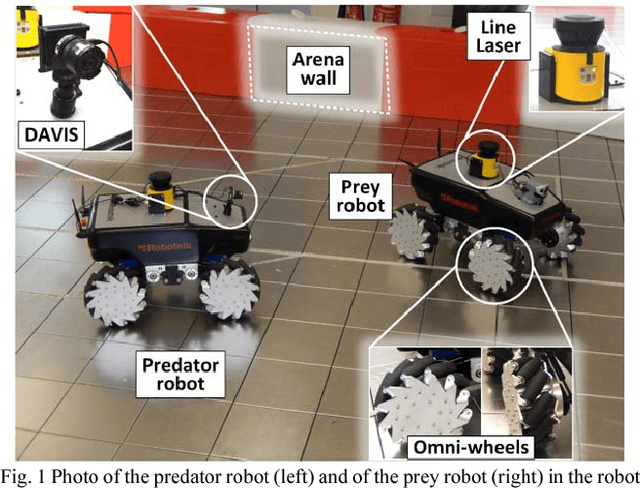
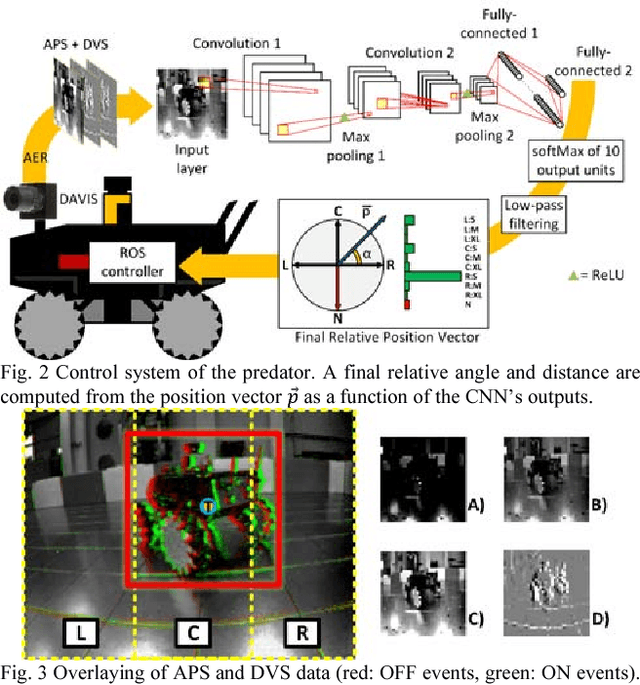

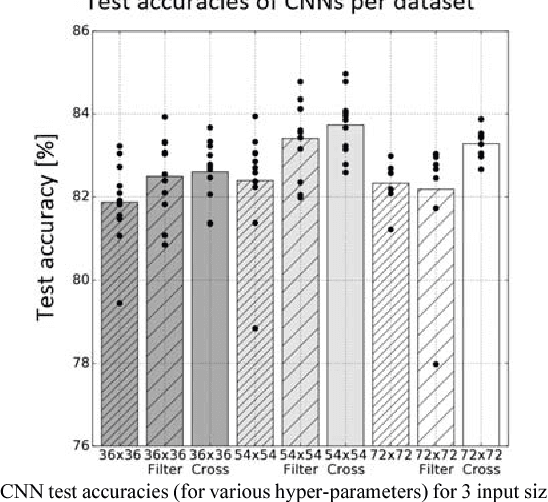
Abstract:Machine vision systems using convolutional neural networks (CNNs) for robotic applications are increasingly being developed. Conventional vision CNNs are driven by camera frames at constant sample rate, thus achieving a fixed latency and power consumption tradeoff. This paper describes further work on the first experiments of a closed-loop robotic system integrating a CNN together with a Dynamic and Active Pixel Vision Sensor (DAVIS) in a predator/prey scenario. The DAVIS, mounted on the predator Summit XL robot, produces frames at a fixed 15 Hz frame-rate and Dynamic Vision Sensor (DVS) histograms containing 5k ON and OFF events at a variable frame-rate ranging from 15-500 Hz depending on the robot speeds. In contrast to conventional frame-based systems, the latency and processing cost depends on the rate of change of the image. The CNN is trained offline on the 1.25h labeled dataset to recognize the position and size of the prey robot, in the field of view of the predator. During inference, combining the ten output classes of the CNN allows extracting the analog position vector of the prey relative to the predator with a mean 8.7% error in angular estimation. The system is compatible with conventional deep learning technology, but achieves a variable latency-power tradeoff that adapts automatically to the dynamics. Finally, investigations on the robustness of the algorithm, a human performance comparison and a deconvolution analysis are also explored.
* 8 pages
Steering a Predator Robot using a Mixed Frame/Event-Driven Convolutional Neural Network
Jun 30, 2016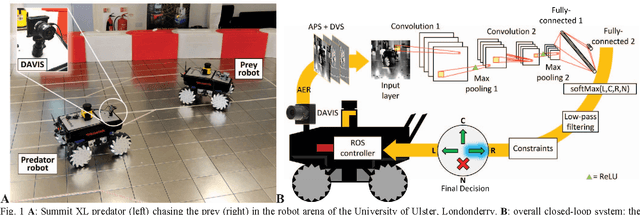
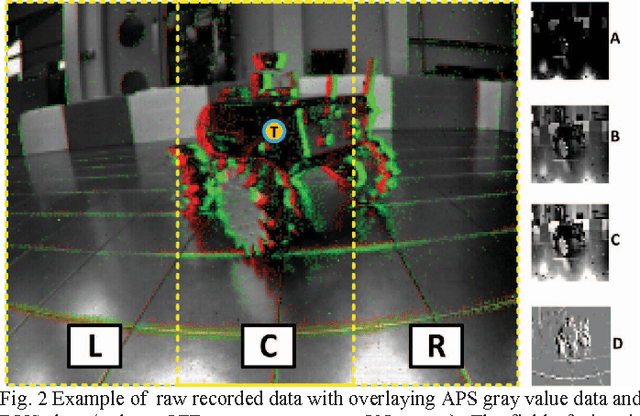
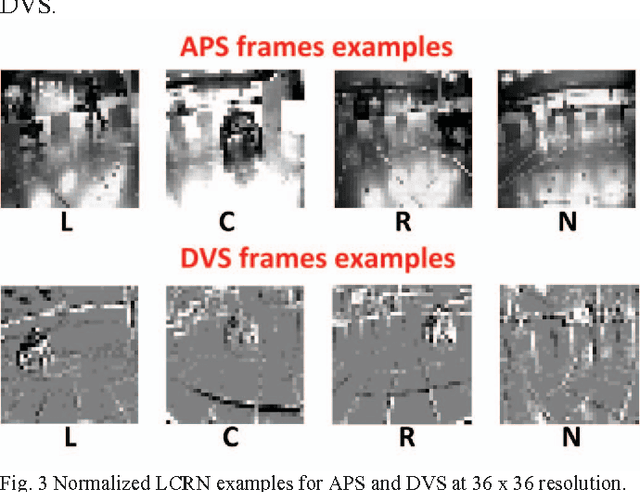
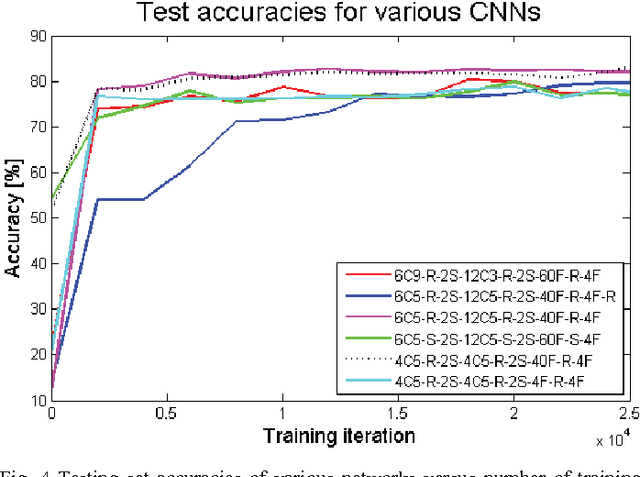
Abstract:This paper describes the application of a Convolutional Neural Network (CNN) in the context of a predator/prey scenario. The CNN is trained and run on data from a Dynamic and Active Pixel Sensor (DAVIS) mounted on a Summit XL robot (the predator), which follows another one (the prey). The CNN is driven by both conventional image frames and dynamic vision sensor "frames" that consist of a constant number of DAVIS ON and OFF events. The network is thus "data driven" at a sample rate proportional to the scene activity, so the effective sample rate varies from 15 Hz to 240 Hz depending on the robot speeds. The network generates four outputs: steer right, left, center and non-visible. After off-line training on labeled data, the network is imported on the on-board Summit XL robot which runs jAER and receives steering directions in real time. Successful results on closed-loop trials, with accuracies up to 87% or 92% (depending on evaluation criteria) are reported. Although the proposed approach discards the precise DAVIS event timing, it offers the significant advantage of compatibility with conventional deep learning technology without giving up the advantage of data-driven computing.
 Add to Chrome
Add to Chrome Add to Firefox
Add to Firefox Add to Edge
Add to Edge